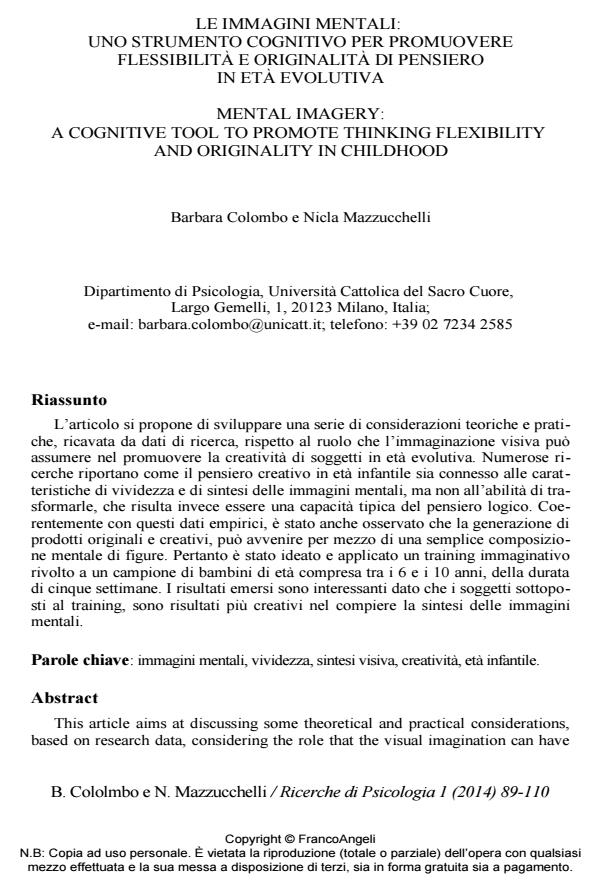Mental imagery: a cognitive tool to promote thinking flexibility and originality in childhood
Journal title RICERCHE DI PSICOLOGIA
Author/s Barbara Colombo, Nicla Mazzucchelli
Publishing Year 2014 Issue 2014/1
Language Italian Pages 22 P. 89-110 File size 225 KB
DOI 10.3280/RIP2014-001005
DOI is like a bar code for intellectual property: to have more infomation
click here
Below, you can see the article first page
If you want to buy this article in PDF format, you can do it, following the instructions to buy download credits

FrancoAngeli is member of Publishers International Linking Association, Inc (PILA), a not-for-profit association which run the CrossRef service enabling links to and from online scholarly content.
This article aims at discussing some theoretical and practical considerations, based on research data, considering the role that the visual imagination can have to promote creativity during childhood. Numerous studies report a positive role of creative thinking during childhood. This appears to be linked to vividness and synthesis of mental images. At the same time, it is not connected to the ability to transform images, which is typical of logical thinking. It also has been reported that many original and creative products result from a simple mental composition of figures. Starting from these assumptions, an imaginative training for children (between 6 and 10 years of age) has been implemented. The results obtained after 5 weeks of training are presented and discussed. Children that took part in the training, were found to be more creative in performing synthesis of mental images.
Keywords: Imagery mental, vividness, mental synthesis, creativity, childhood.
Barbara Colombo, Nicla Mazzucchelli, Le immagini mentali: uno strumento cognitivo per promuovere flessibilità e originalità di pensiero in età evolutiva in "RICERCHE DI PSICOLOGIA " 1/2014, pp 89-110, DOI: 10.3280/RIP2014-001005